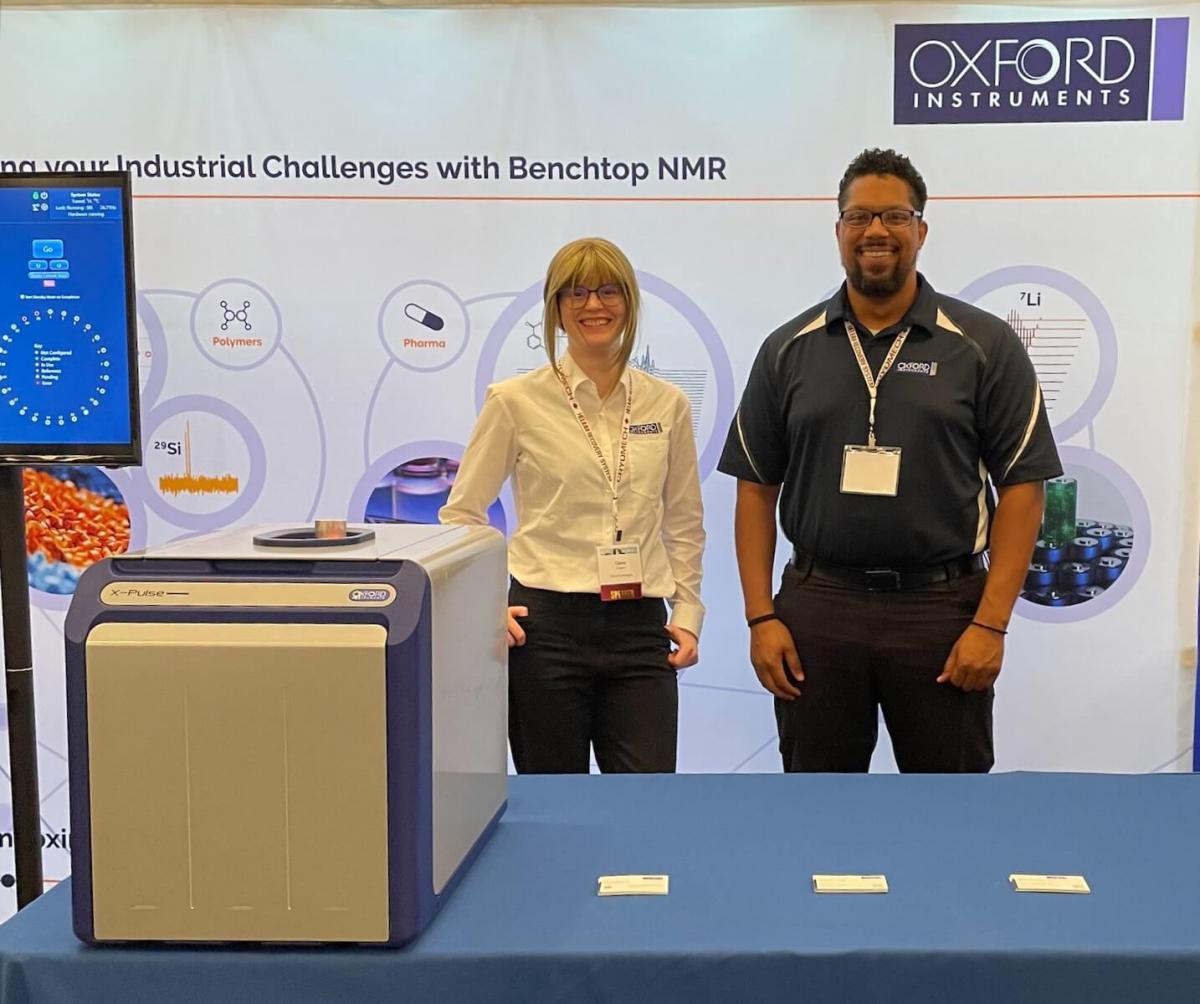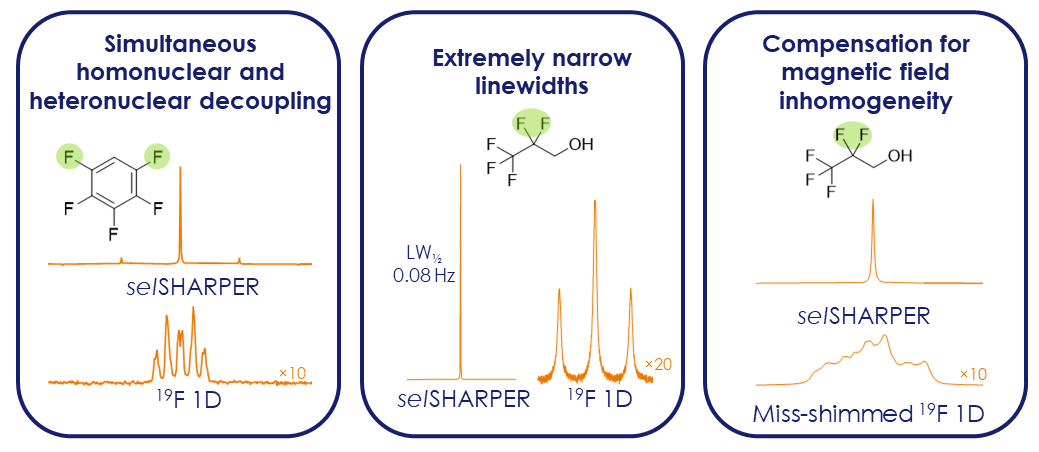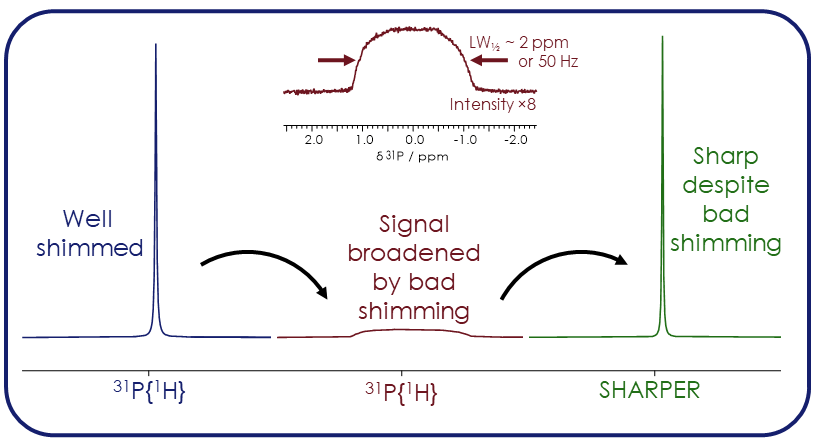The Practical Applications of NMR in Industry Conference (PANIC) emphasises “getting the job done”. It looks at NMR as a practical solution to diverse problems whether they come from industrial, government, or academic research laboratories. Amongst the latest research, best-practices and regulatory aspects are integrated.
The 2022 conference had a particular focus on quantitative NMR (qNMR) as used in a pharmaceutical context and was sponsored by the US Pharmacopeia. In our webinar “Enhancing development, scale-up and manufacturing of pharmaceuticals with benchtop NMR” benchtop qNMR was briefly introduced with some examples if you are interested in learning more.

Following the past couple years of online-only conferences, my colleague, Mike Gardener, and I were very pleased to see people in-person at the booth and had many enjoyable discussions.
Scientific Content
The meeting started with a poster session that reflects the breadth of areas NMR is applied to including:
- food and drink
- life sciences
- chemical manufacturing
- polymers
- pharmaceuticals (from process monitoring to biologics)
The poster presentations were not limited to NMR spectroscopy alone, both Time Domain NMR (TD-NMR) and Magnetic Resonance Imaging (MRI) also featured.
This diversity continued in the ten brilliant sessions of talks:
- All Molecules, Great and Small
- Solid ... Solid as a Rock
- Metabolomics/Mixture analysis: to isolate or not to isolate … lets go with not!
- Big Trouble in Little Magnets
- Super Session (Part 1): qNMR Advanced Session and Updates, presented by US Pharmacopeia
- Super Session (Part 2): qNMR Advanced Session and Updates, presented by US Pharmacopeia
- The tough stuff – measuring difficult things in soft materials
- PANIC 10th Anniversary Session (We are 10!)
- Proteins, Peptides, Genes/Vaccines – With our Magnets Now You’re Seen
- MR in Chemistry: A Few of Our Favorite Things
- Bayes’ed and (Un)Confused: Using Bayesian Statistics and Prior Knowledge to Understand NMR Data and Make Decisions
These sessions discussed the latest developments for the analysis of a variety of materials, solution state, solid state, complex and heterogenous mixtures, with a practical perspective. The applications contained examples all the way from large proteins down to small solvent molecules.
SHARPER
I was grateful to the organisers for the opportunity to present a talk titled “Benefits of Applying SHARPER Benchtop NMR in Complex Molecules”. As a PostDoc at Edinburgh, I worked on the SHARPER pulse sequence(s). Since joining Oxford Instruments I’ve implemented these techniques on our benchtop X-Pulse system to measure data on a range of interesting nuclei, including silicon (²⁹Si).
The SHARPER (Sensitive, Homogeneous And Resolved PEaks in Real time) pulse sequence compensates for magnetic field inhomogeneity while simultaneously decoupling, producing extremely narrow singlet signals for a selected nucleus of interest. This is achieved while only applying pulses to the signal of interest [1,2]. The different advantages of the SHARPER pulse sequence are illustrated in the figure below for several fluorinated compounds.
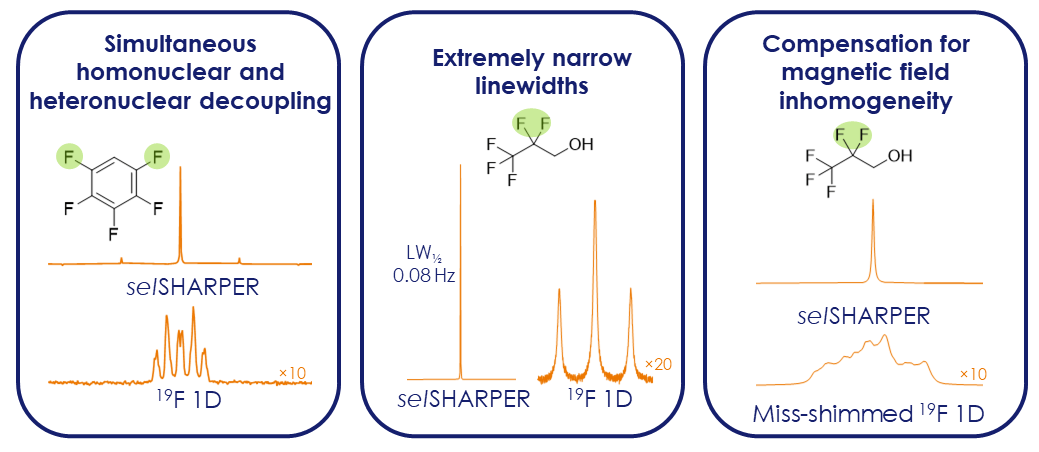
Many people at the conference were interested to know: “How inhomogeneous can the sample be and still achieve a sharp signal with SHARPER?” Since the conference I have measured a spectra with a sample of phosphoric acid to demonstrate this. The figure below shows the results.
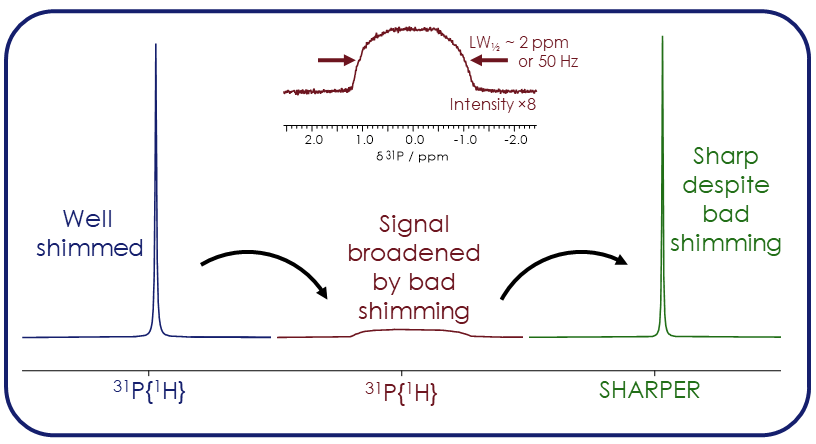
With a well shimmed sample of phosphoric acid, we see a clear, sharp singlet signal in the ³¹P{¹H} spectrum. If we introduce inhomogeneity by intentionally miss shimming the sample, then the signal become broadened and the intensity of the signal drops. The last spectrum shows the sharp singlet peak we recover by measuring with SHARPER spectrum in the bad shimming conditions. The linewidth of the broad signal in this example was ~2 ppm (equivalent to ~50 Hz). I hope this would be sufficient for most users, but this is not the limit. We hope you try the method and let us know how you get on.
Next PANIC Conference
We look forward to seeing you in Nashville, Tennessee this March!
References
[1] Jones, A. B.; Lloyd-Jones, G. C.; Uhrín, D., Anal. Chem., 89(18), 10013-10021, 2017. [link]
[2] Dickson, C. L.; Peat, G; Rossetto, M; Halse, M. E.; Uhrín, D., Chem. Commun., 58, 5534-5537, 2022. [link]


